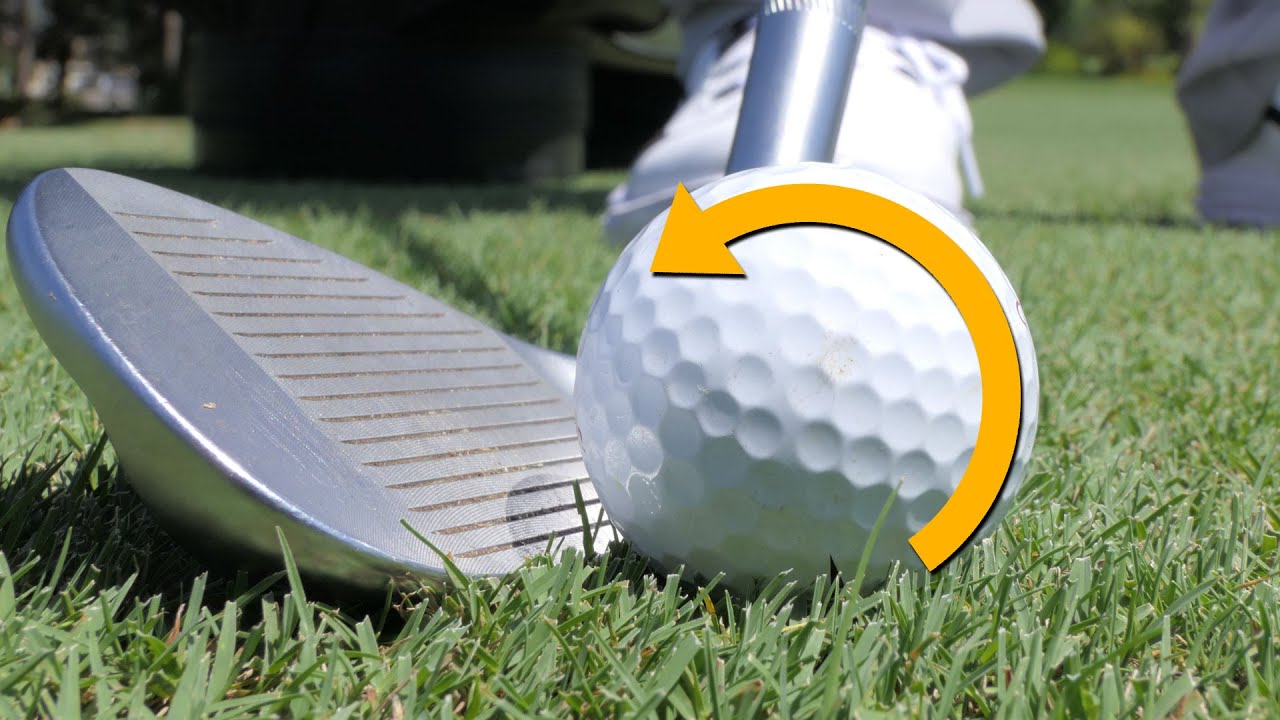Backspin plays a major role in getting the golf ball to a far distance. The backspin that is put on the golf ball will cause the dimples to produce enough lift, thereby sending the ball far into mid air.
More importantly, once the ball lands on the ground, it is less likely to bounce away from the target due to the spin generated.
Therefore, golfers need to know how to put a backspin on the golf ball if they wish to lower their golf scores and win more rounds.
There are three main factors that will help you generate backspin on the golf ball. These include a good clubhead speed, good spin loft, and friction on the clubface. But before we dive into these 3 essential shot ingredients, we must first take into account a few conditions that should be met before attempting to create backspin.
You want to check the following:
1. Make Sure You are Using Good Equipment:
If you are using a very old wedge, then chances are the grooves won’t be sharp enough. There could be nicks and scratches all over the clubface that may slightly affect the performance of your golf shot.
PGA Tour players will change their wedges and irons at least 4 times per year to ensure their grooves are staying sharp. So if you want to get the most out of your backspin, make sure you are playing with top notch equipment.
2. You Should Be Playing With A Premium Golf Ball:
Not all golf balls are made the same. Some are made with one shell while others can have up to 5 covers.
The general rule is that the more shell or cover on a golf ball is the more it will spin. Those with one outershell or none at all are solely designed for distance and generate little spin.
Professional players often opt for premium 3 piece golf balls as they produce just the right amount of spin and distance. Therefore, if you want to put enough backspin on your golf shots, then you should be using a 3 piece premium golf ball or higher.
3. Play In Dry Conditions
Golfers won’t be able to control the weather condition on a given day, but if the golf ball, clubface and ground is wet, then it will be difficult to create a high level of backspin on your shot. Golfers can take certain measures to ensure their equipment are kept dry.
The obvious way to go about this is to dry your equipment with a towel. Your golf ball and clubface should be kept dry and clean from any dew, grass or dirt in order to maximize the level of backspin.
4. The turf
The last thing you should check before attempting to put a backspin on a golf ball is the length of the grass on the turf. If the golf ball is placed on or behind really high grass, it is not going to help you hit the shot with backspin. The ball is going to get trapped between the clubface and the grass which will reduce the friction necessary for the backspin.
Now that we’ve taken a look at the conditions that must be met, here is what you should do to create backspin on your golf ball:
Table of Contents
How To Put Backspin On A Golf Ball?
1. Clubhead Speed
The first thing you need to do to create backspin is to apply power on your downsing as you hit through the golf ball. This will produce the clubhead speed needed to get the ball spinning in the air as opposed to a softer shot like a chip.
As a rule of thumb, the faster the downswing or clubhead speed is the greater the backspin on the golf ball.
You should also note that the backspin depends on your angle of attack. If your downswing is on a more downward path, then it will produce more backspin than if the swing was flat or going on an upward path at impact.
The inclusion of both a fast swing speed and downward attack angle will almost always produce more backspin.
2. Spin Loft
The Spin loft has to deal with the clubface and your angle of attack as we previously mentioned. Though this may seem technical and scientific, the concept is simple. To generate spin loft, you should get a downward stroke off the golf ball as you swing your club through. A wedge is an ideal club to use as it has the most loft out of all the clubs.
A good angle of attack would be minus 2.5 degrees which indicates the clubhead is attacking the ball downwards. And by our calculation, a golfer will be able to generate 3017 rpm of spin with an average swing speed of 90 mph using the angle given. The ball will have a carry distance of 203 yards out.
On the other hand, if we should increase the angle of attack to where it is plus 2 degrees, then by our calculation, the spin will decrease to 2562 rpm but an increase in distance to 214 yards.
Therefore, we can see that the relationship between the angle of attack to the spin rate is inversely proportional. Meaning, as the angle of attack decreases, the spin rate of the golf ball increases and vice versa.
3. Friction
Another essential factor that decides backspin generation is friction. The friction we are referring to is the resistance between the ball and the clubface that can be characterized like glue.
To create friction, the clubhead must be moving down towards the ball and connect at the lower part at the time of impact. This will send the ball crawling up the clubface. The image below shows the location where the clubface should meet the ball to create friction for the backspin.
Diagram showing very low contact on clubface with the golf ball

The orange arrow shows the direction the ball will spin off the club face into the air. Clubs with more loft will produce more friction between the face and the ball. This is why we recommend using a wedge if you are trying to create more backspin, although this can still be achieved with most of your clubs in your golf bag.
Set Up Position
Rather than playing the ball in the center of your feet, you want to play the ball to your trail foot that is more to the right side. This set up encourages you to play a downward angle of attack that will create the backspin.
You also want to apply slight pressure into the left foot so that you are kept grounded once you apply a downward angle of attack during the downswing. This prevents the clubhead from skimming the turf before hitting the ball and it also prevents you from hitting an upswing shot.
You can also add a bit more loft by opening the clubface by a fraction, that is to rotate the handle to the right slightly.
Practice Drill
One of the most effective drills you can practice doing to gain backspin on your golf shot is to take a thin coin and put it on the ground, then use your club to clip the coin off the ground. Do about 5 reps, then put the ball on top of the coin and do another 5 reps where you still manage to clip the coin off the ground.
This will ensure that the clubface is connecting really low down at the grooves onto the side of the golf ball and that will generate friction for the backspin.
It’s also a good idea to spray the face of the club so you can see where the ball is connecting to the face of the club. You want this to be low down at the grooves and not high up onto the face of the club.
Once you are producing a high clubhead speed with a very lofted club and applying a downward angle of attack, you will definitely start to see some high spin rates. Good luck!



